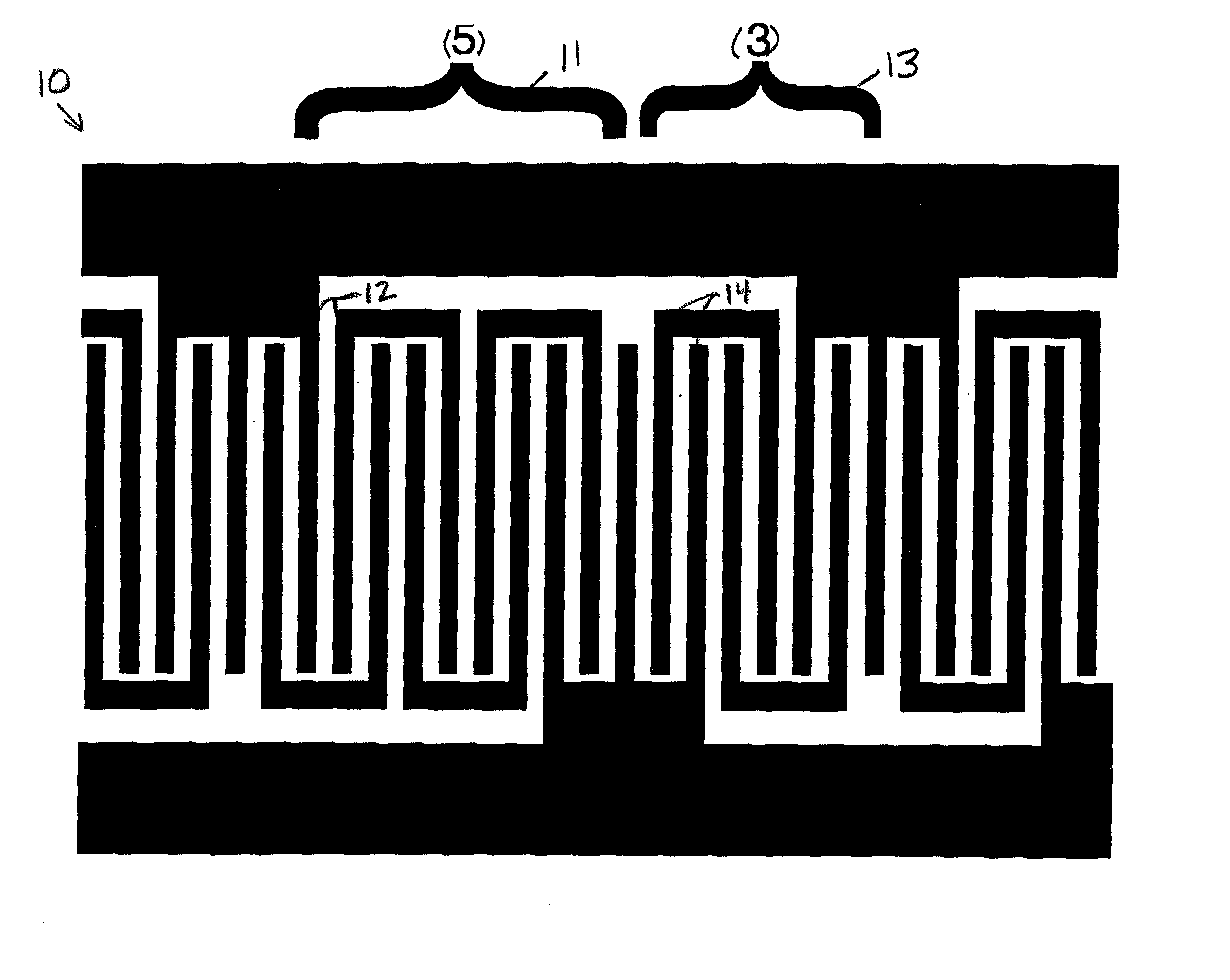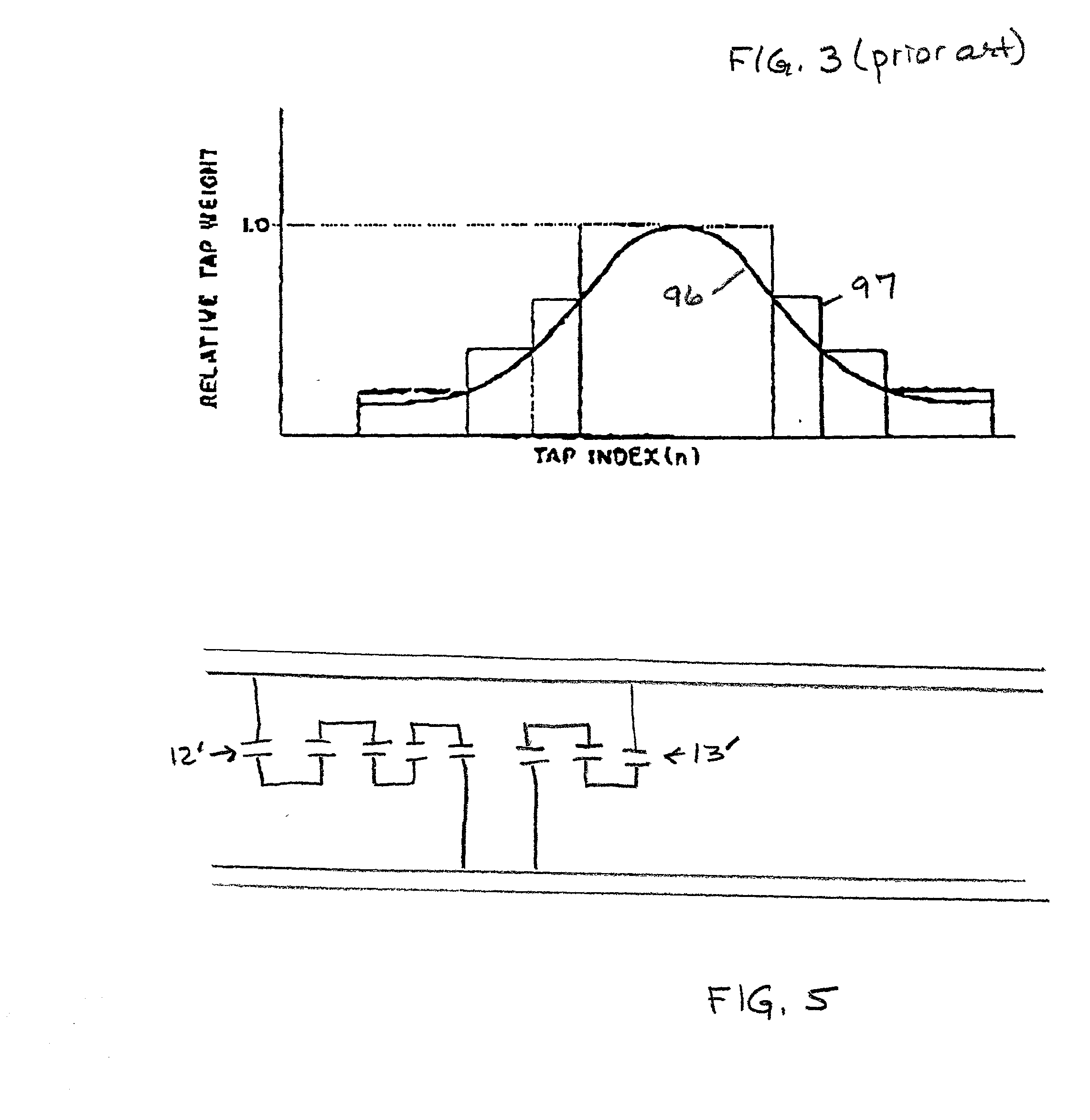String weighted surface-acoustic-wave transducer
a surface-acoustic-wave transducer and string weight technology, which is applied in piezoelectric/electrostrictive/magnetostrictive devices, piezoelectric/electrostriction/magnetostriction machines, electrical apparatus, etc., can solve the degree of coarseness of tap weighting and withdrawal weighting, and achieve the effect of improving the rejection property
- Summary
- Abstract
- Description
- Claims
- Application Information
AI Technical Summary
Benefits of technology
Problems solved by technology
Method used
Image
Examples
Embodiment Construction
[0025] Preferred embodiments of the invention will now be presented with reference to FIGS. 4 and 5.
[0026] A schematic diagram illustrating a section of a string-weighted transducer 10 is presented in FIG. 4. Two strings are bracketed, the first 11 comprising five subtransducers 12 and the second 13 comprising three subtransducers 14.
[0027] A diagram of the subtransducers 12,14 represented by impedance elements 12',13' (FIG. 5) illustrates that all the taps have the same tap weight within the length of each string 11,13. The voltages at the two taps in this particular embodiment will be 1 / 5 and 1 / 3, and the lengths of the two strings are, respectively, 6 and 4 wavelengths. Each subtransducer 12,14, however, is nominally one wavelength.
[0028] It will of course be understood by one of skill in the art that alternate numbers of strings and subtransducers may be employed. It may be seen that there is a great deal of flexibility in this technique, and that virtually any number of strings...
PUM
 Login to View More
Login to View More Abstract
Description
Claims
Application Information
 Login to View More
Login to View More - R&D
- Intellectual Property
- Life Sciences
- Materials
- Tech Scout
- Unparalleled Data Quality
- Higher Quality Content
- 60% Fewer Hallucinations
Browse by: Latest US Patents, China's latest patents, Technical Efficacy Thesaurus, Application Domain, Technology Topic, Popular Technical Reports.
© 2025 PatSnap. All rights reserved.Legal|Privacy policy|Modern Slavery Act Transparency Statement|Sitemap|About US| Contact US: help@patsnap.com



